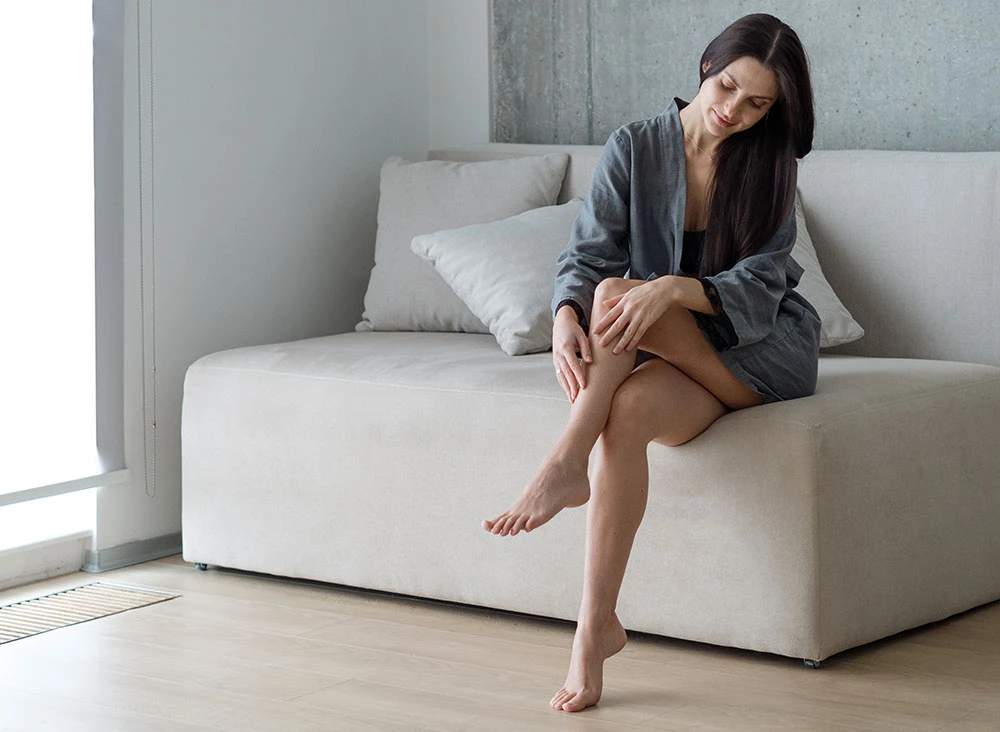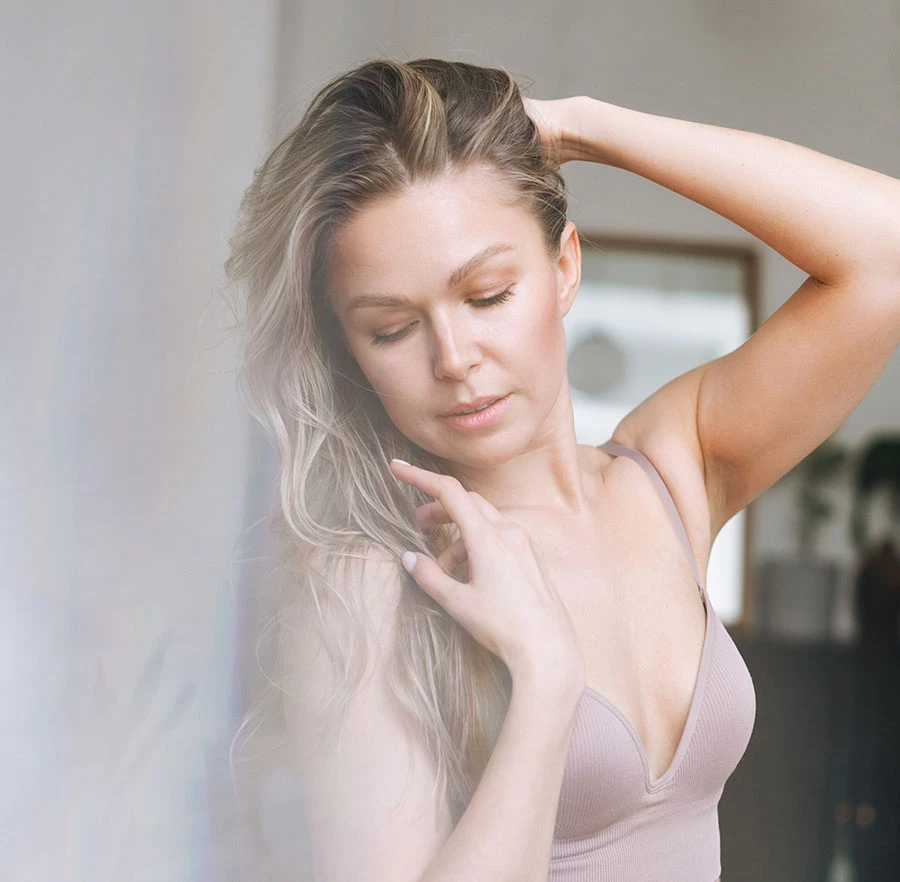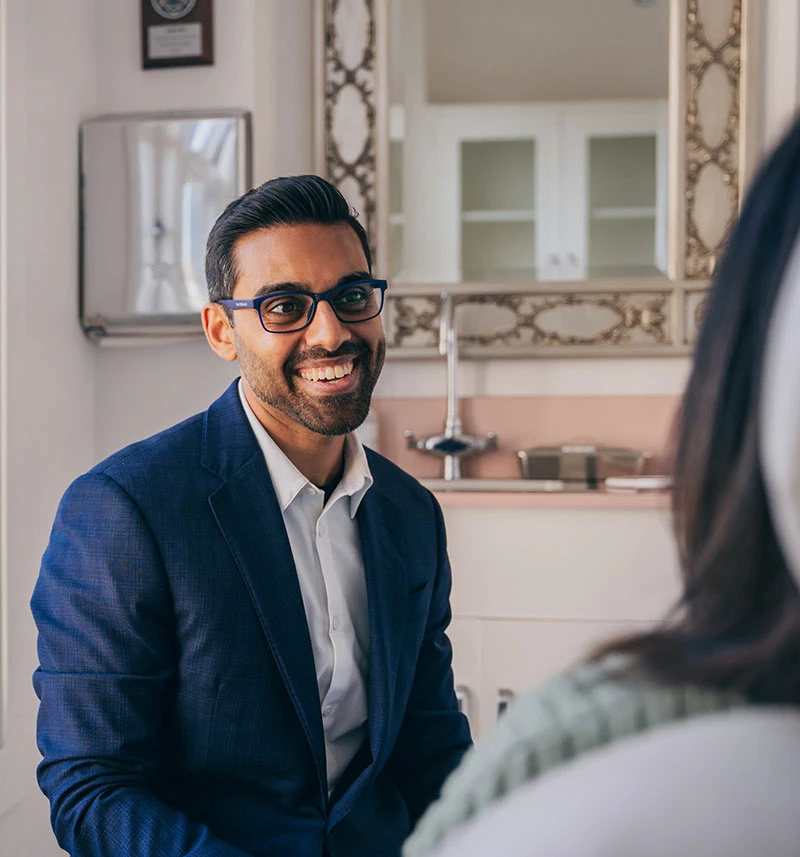“He took painstaking care to stitch the wound and now, two weeks later, it looks incredible!”
Dr. Dedhia was a pleasure to work with and did an incredible job with my son’s nose. After a nasty fall, my son was scared and had a nasty wound on the bridge of his nose. Dr. Dedhia took the time to calm all our nerves, explain the procedure, and made sure my 9-year-old knew what to expect next. He took painstaking care to stitch the wound and now, two weeks later, it looks incredible! You can barely even tell my son had an incident. His staff was very kind and knowledgeable as well. I will be telling my community about Dr. Dedhia and recommend him and his practice to care for the faces you care about most!
Introduction to Scar Revision
Some scars tell a story, but not all stories are ones we wish to wear on our skin. At Raj Dedhia MD Facial Plastic Surgery here in San Francisco, Dr. Dedhia understands the impact that facial scars can have on your confidence and self-esteem. With his expertise in facial plastic surgery and top-of-the-line Scar Revision techniques, Dr. Dedhia and our providers offer a compassionate approach to help you rewrite the narrative of past scars.
Using advanced surgical and non-surgical methods, our team strives to minimize the appearance of scars and restore a smoother, more natural complexion. Say goodbye to unwanted scars and keep reading to embrace a future where your skin reflects the beauty within.

What is Scar Revision?
Scar Revision is a cosmetic procedure in San Francisco aimed at minimizing the appearance of scars caused by injury, surgery, or previous trauma. It involves various techniques to improve the texture, color, and overall appearance of scars, ultimately blending them more seamlessly with the surrounding skin. The goal of Scar Revision from our practice is to enhance the aesthetic outcome and restore confidence in individuals who may feel self-conscious about visible scars on their faces.
What are the benefits of Scar Revision?
The benefits of Scar Revision in San Francisco are amazing, and can significantly improve both the appearance and texture of scars. Some of the key benefits include:
- Improved appearance
- Enhanced texture
- Reduced discomfort
- Boosted confidence
- Restored functionality
Who are the best candidates for the Scar Revision procedure?
The best candidates for Scar Revision procedures in San Francisco are individuals who are bothered by the appearance or discomfort of scars and desire improvement. Typically, candidates for Scar Revision:
- Have noticeable scars
- Have fully healed scars
- Are in good overall health
- Have realistic expectations
- Are non-smokers

Scar Revision Consultation
What’s the first step?
The first step in Scar Revision is to schedule a consultation with Dr. Dedhia or one of our experienced providers. During this initial appointment, we will evaluate the scar, discuss your concerns and goals, and review your medical history.
Following the evaluation, Dr. Dedhia will develop a personalized treatment plan tailored to your unique needs and desired outcomes. This plan may include various surgical or non-surgical techniques, depending on the type, size, and location of the scar, as well as the patient’s preferences and expectations.
What to expect on the day of Scar Revision surgery
On the day of your Skin Cancer Reconstruction surgery, you will meet with Dr. Dedhia one more time to review the steps of your surgery again and may make some markings that will act as a guide during the procedure. You will then meet our Anesthesiologist who will ask you some medical questions and administer your anesthesia.
Depending on the size of the cancerous lesion, the location, the types of tissues affected, and the depth of its roots, Dr. Dedhia may utilize one or more of the following techniques for your San Francisco Skin Cancer Reconstruction:
Primary Closure
Primary Closure using sutures is the most straightforward method when repairing a skin cancer defect. This technique converts the wound from a circular opening to a linear scar. The wound will first be made longer to allow the edges to come together evenly and avoid skin bunching, with the final scar tending to be two to three times the length of the original defect. A longer scar with smooth skin edges is often less visible than a shorter scar with bunched edges.
There are natural lines that correspond to tissue elasticity called relaxed skin tension lines (RSTL). When incisions are placed in the same direction as these lines, the scars blend in much better and are less visible than incisions that are placed across these lines. Dr. Dedhia takes a great amount of care when selecting the best orientation of the final scar concerning these skin lines, as well as the scar’s proximity to your surrounding facial structures.
Flap Surgery
Flap Surgery is the most utilized form of skin cancer reconstruction. It involves using skin that is immediately adjacent to the site of the cancer. There are a number of different types of local flaps that each have different designs and specific methods of movement. The exact type of flap chosen is based on the location and size of the defect left after skin cancer removal, along with the unique characteristics of the skin in that location.
Many local flaps involve extending incisions from the original cancer defect to allow for a flap of skin to be rotated or advanced to cover the defect. The final shape of the scar created may have an irregular shape (as opposed to a straight line) and the scar length may be quite a bit longer than the size of the original defect. The primary goal is to re-drape the skin smoothly and hide scarring as much as possible in existing facial lines and creases.
More complex flaps such as forehead flaps and melolabial flaps take tissue from an area more distant to the defect and are used for more complex reconstructions, particularly of the nose. These may require multiple stages of surgery to optimize the reconstruction.
Some of the advantages of flap surgery include a closer color and contour match, and it can be designed with the best thickness to match the depth of the cancer defect. Typically following flap repair, sutures will remain in place for up to one week and will be removed in the office at follow-up.
Skin Graft
Skin Grafting involves removing skin from one portion of the body to repair a defect in another location. Skin grafts can be taken as partial thickness (shaving off the very top layer of skin without an incision) or full thickness (surgically removed and sutured closed). Partial thickness grafts tend to heal with significant contraction and may appear lighter in color and shinier than the surrounding skin, so they may be utilized in certain locations, but are rarely the first choice for repairing defects.
One advantage of skin grafts includes avoiding extending or placing additional incisions at the skin cancer removal site which are designed to perfectly match the shape of the defect. Commonly selected sites include high on the forehead, behind or just in front of the ear, or low on the neck. Dr. Dedhia will carefully choose the location of the donor tissue that has the best color, surface, and thickness to match the cancer defect. One of the key disadvantages of skin grafting is the limited color and contour match to the skin; since the skin is taken from a different location on the body, the match isn’t always seamless.
During surgery, Dr. Dedhia will remove the graft and suture the incision closed in a fine line. He then takes the removed skin and sutures it into its new location. This can be a very quick and reliable method to repair some facial defects. A special dressing called a “bolster” is often placed at the time of surgery and sewn in place to prevent the graft from moving. This is typically kept for one week and is then removed in the office at follow-up.
Skin grafts can only be used to repair fairly shallow cancer defects because taking a very thick graft decreases the chance of it receiving enough new blood supply to survive following the procedure. Despite these limitations, a skin graft provides a very reliable and good aesthetic outcome without the need for lengthening incisions around the defect and keeps the operative time short.
Using these advanced techniques, any scarring or disfigurement left in the skin tissue after Mohs surgery can be repaired or improved to achieve the best aesthetic result. During your consultation, Dr. Dedhia will discuss the pros and cons of each approach.
Scar Revision recovery
Once Dr. Dedhia has finished performing the skin reconstruction surgery, it is important to take note of the post-surgery advice to ensure a smooth and timely recovery. For many patients, this involves staying out of the sun or harsh weather environments to allow time for the skin to heal. Part of the recovery process is scheduling follow-up appointments to ensure your healing is on track, and for Dr. Dedhia to monitor how your skin is adjusting to the surgery.
After you are released from our care that same day, you will be able to return home and rest in comfort. You will need a friend or family member to be able to drive you home, and possibly help you around the house for the next day or two. There will be some minor bruising and swelling, and potentially some pain immediately after surgery, but we will provide you with directions on how to alleviate any discomfort.
Any individual who is affected by skin cancer should have regular follow-ups with a Dermatologist experienced in skin cancer to watch carefully for cancer recurrence or the development of a new cancer. Dr. Dedhia will also have you return for regular follow-ups so he can closely monitor your healing process.
For any pain post-surgery, Dr. Dedhia can recommend over-the-counter pain medication, or prescribe stronger medication if it is needed.
The healing period for all incisions can take up to one year to be fully complete. Even after healing is complete, Dr. Dedhia may suggest other cosmetic procedures that will help optimize the outcome and minimize the appearance of scarring.
Scar Revision cost
How much does Scar Revision cost in San Francisco, CA?
The cost of Scar Revision surgery in San Francisco, CA, can vary depending on the extent of the scarring, the complexity of the procedure, and the specific techniques used. During your consultation with Raj Dedhia MD Facial Plastic Surgery, you will receive a personalized treatment plan tailored to your unique needs, including an estimate of the associated costs.

Why choose Dr. Dedhia?
At Raj Dedhia MD Facial Plastic Surgery, you are sure to get patient care and excellence. Dr. Dedhia’s cosmetic surgery focuses on obtaining natural and long-lasting results. Dr. Dedhia believes each person is unique and provides a personalized treatment plan during each consultation. This should be your choice of practice for your Scar Revision in San Francisco.
Dr. Raj Dedhia is a Double-Board Certified Facial Plastic Surgeon specializing in cosmetic and reconstructive surgery of the face and neck. He has over 10 years of surgical experience, with a focus on rhinoplasty and facelift surgery. He is affiliated with the American Board of Otolaryngology-Head and Neck Surgery (ABOHNS), American Board of Facial Plastic and Reconstructive Surgery (ABFPRS), American Academy of Facial Plastic and Reconstructive Surgery (AAFPRS).
Scar Revision FAQ’S
Contact us
Schedule a consultation
Unlock your aesthetic possibilities with Dr. Raj Dedhia – schedule your consultation today for personalized insights and a tailored plan to achieve your beauty goals.
“Thanks you all! Dr. Dedhia and his staff are so professional and very accommodating.”
Thanks you all! Dr. Dedhia and his staff are so professional and very accommodating. Dr.Dedhia in my opinion is a very skilled surgeon he helped fix my face and make me look like my normal self again. I had an accident that left a pretty bad scar under and around my eye. The accident changed my entire appearance and I had little hope that I would ever look like I had before. After surgery and a couple in office procedures I am as pretty as ever. Thanks Dr. Dedhia!